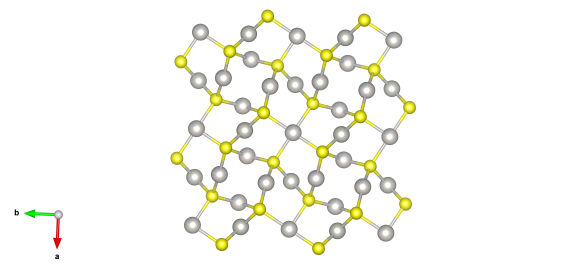Celebrating one of the founders of the field – the crystal structure of Braggite
‘The gift of expression is important to them as scientists; the best research is wasted when it is extremely difficult to discover what it is all about …’ W. L. Bragg
The motivation behind this blog was to show the world as many crystal structures as we could. We hope that so far, as we're now three months in, we've shown off the diverse world of crystallography and given a bit of an insight into the sciences that it is shaping. We're exploiting the fact that, no matter what the field, crystallographers describe their crystal structures in a standard format and often store them in publicly accessible databases for the world to see. We're hoping that our picking out a few (365 out of nearly a million structures available across various databases) is expressing to the world what our science is about.

WL Bragg after winning the Nobel Prize for Physics in 1915
Today is the birthday of one of the founders of our field, W. L. Bragg. Together with his father, W. H. Bragg, and Max von Laue they put together the methods and equations that describes how the phenomena of diffraction can lead to an understanding of where atoms are in a structure. W. L. Bragg still is the youngest recipient of the Nobel Prize for Physics. He was 25 when he was recognised for his efforts in determining the first crystal structures from diffraction. He didn't stop there, and the efforts that he put into expanding this field and teaching others massively increased the reach of the technique, especially in the determining of the structure of DNA.
So it's a good day to write about a mineral that was named after W. L. Bragg and his father.
What does it look like?

Image generated by the VESTA (Visualisation for Electronic and STructual analysis) software http://jp-minerals.org/vesta/en/
What is it?
Braggite is the mineral name for a mixed metal sulfide, composed of palladium, platinum and nickel, found within palladium and platinum ore deposits in South Africa. It was named after the Braggs because it the first mineral to be discovered with by X-rays. This is because it looks very similar to other metal sulfides it forms near, Cooperite and Laurite, and it was only when samples were investigated with X-ray diffraction that it was realised some of the samples had a very different crystal structure.
Where did the structure come from?
Though Braggite was discovered in 1932, it wasn't until 1973 that the atomic arrangement in its structure was described with single crystal X-ray diffraction. It is structure #9007574 in the Crystallography Open Database.






